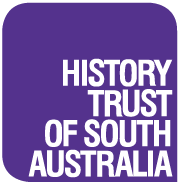Last week saw me driving down to the ferry terminal at Cape Jervis with the History SA car packed to the gunnels with archival material, monitoring equipment and sample artefacts from Artlab Australia. I was heading for Kangaroo Island to facilitate a two-day ‘Caring for Collections’ workshop for community museums and history groups. We run this skills development program annually in different regions in South Australia and this was the first time we had been able to offer such an experience to those on the other side of the Backstairs Passage. Better still it was free of charge courtesy of a National Library of Australia Community Heritage Grant.
All went to plan and our two workshop presenters from Artlab – Preventive Conservator Anne Dineen and Senior Textile Conservator Kristin Phillips – arrived safely by plane later that day and we were soon all set up ready to go in the Natural Resources Board Room in Kingscote.
Almost 20 people attended each day made up of mainly volunteers from Kangaroo Island’s three museums – Hope Cottage Museum at Kingscote, Penneshaw Maritime & Folk Museum and Parndana Soldier Settlement Museum. Both mornings were spent learning the theory behind managing a museum environment, identifying risks and pests that might affect our collections as well as best practice regarding storing or displaying archival material, photographs, costume and textiles. Afterwards, participants could ‘have a go’ at what they had learnt.
On the first afternoon everyone gathered at nearby historic Hope Cottage, built in 1859, and now a museum run by the Kingscote branch of the National Trust. Participants were divided into groups to try out their new found knowledge. Armed with magnifying glasses and torches, teams enthusiastically searched for signs of pest activity, keenly clutching their resulting collection of bugs (but not too many!) collected via sticky traps and plastic bags. Then there was a chance to try out electronic monitors to measure light, relative humidity and temperature in various parts of the building and discover ways in which artefacts might be displayed in better environmental conditions.
The second afternoon saw us back in the meeting room where participants learnt how to surface clean objects (including a seagull!) with the aid of micro attachments on a regular vacuum cleaner as well as a tulle-covered embroidery hoop; how to encapsulate documents using Mylar; or enclose a booklet by making a four flap folder; and how to make padded clothes hangers for storing/displaying costume plus a padded support for a very elegant 19th century smoking cap.
It was obvious everyone had a lot of fun over the two days. As well as being able to take home a free set of printed notes from the workshop, participants also went away equipped with a lot of useful food for thought for their respective museums and contact details if they needed help in the future.
Photos from the two day workshop can be seen here

